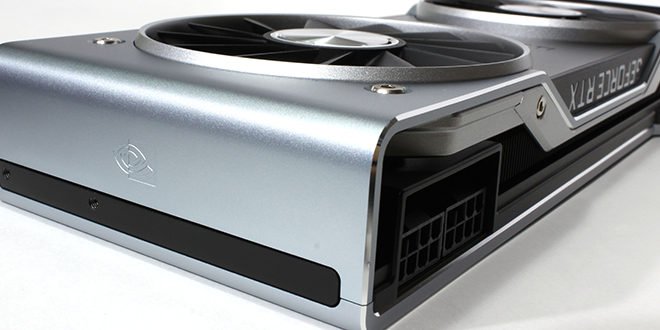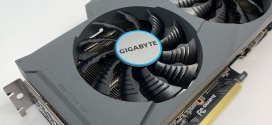SPEC makes this benchmark to allow professionals to benchmark combinations of components so you can learn how well a specific component will work for a professional deployment. The following description is for each of the tests and is pulled directly from their page to avoid any issues or misunderstandings. These benchmarks are GPU targeted to see how your Graphics accelerator can render heavy professional workflows.
3ds Max viewset (3dsmax-06)
The 3dsmax-06 viewset was created from traces of the graphics workload generated by 3ds Max 2016 using the default Nitrous DX11 driver.
The models for this viewset came from the SPECapc for 3ds Max 2015 benchmark and other sources. In order to best approximate real-world use cases, several tests incorporate multiple viewsets on screen, each using a different rendering method. The styles of rendering in the viewset reflect those most commonly used in major markets, including realistic, shaded and wireframe. Some lesser-used but interesting rendering modes such as facets, graphite and clay are also incorporated. The animations in the viewset are a combination of model spin and camera fly-through, depending on the model.
Note: 3DStudioMax does not support 2160p so you will notice it is absent from the 4K results.
CATIA viewset (catia-05)
The catia-05 viewset was created from traces of the graphics workload generated by the CATIA V6 R2012 application from Dassault Systemes. Model sizes range from 5.1 to 21 million vertices.
The viewset includes numerous rendering modes supported by the application, including wireframe, anti-aliasing, shaded, shaded with edges, depth of field, and ambient occlusion.
Creo viewset (creo-02)
The creo-02 viewset was created from traces of the graphics workload generated by the Creo 3™ and Creo 4™ applications from PTC. Model sizes range from 20 to 48 million vertices.
The viewsets include numerous rendering modes supported by the application. Order-independent transparency is enabled for all models with transparent components.
Energy viewset (energy-02)
The energy-02 viewset is based on rendering techniques used by the open-source OpendTect seismic visualization application. Similar to medical imaging such as MRI or CT, geophysical surveys generate image slices through the subsurface that are built into a 3D grid. Volume rendering provides a 2D projection of this 3D volumetric grid for further analysis and interpretation.
At every frame, the bounding cube faces of the volume are tessellated and rendered with a fragment shader that performance a ray-cast from the eye position through the volume, accumulating transparent lit, color-mapped values until either the pixel becomes fully opaque or the volume is exited.
The voxel in the 3D grid is a single scalar value. A transfer function — simply a 1D lookup table — maps the 3D density value to color and alpha values. For lighting calculations, the gradients are computed on the fly using the central differences at each voxel. These state changes exercise various parts of the graphics subsystem. This viewset makes use of hardware support for 3D textures and therefore trilinear interpolation.
In addition to the volume rendering, the test includes both inline and crossline planes (slices in the X and Y planes). Also, for some subtests, “horizons” are present – these are geological strata boundaries of interest, generated by exploration geophysicists, and are rendered using textured triangle strips.
The 3D datasets used in this viewset are real-world seismic datasets found at https://wiki.seg.org/wiki/Open_data . They were translated from their native SEG-Y format and compressed using JPEG-2000.
Maya viewset (maya-05)
The maya-05 viewset was created from traces of the graphics workload generated by the Maya 2017 application from Autodesk.
The viewset includes numerous rendering modes supported by the application, including shaded mode, ambient occlusion, multi-sample antialiasing, and transparency. All tests are rendered using Viewport 2.0.
Medical viewset (medical-02)
The medical-02 viewset uses the Tuvok rendering core of the ImageVis3D (http://www.sci.utah.edu/software/imagevis3d.html) volume visualization program. It renders a 2D projection of a 3D volumetric grid. A typical 3D grid in this viewset is a group of 3D slices acquired by a scanner (such as CT or MRI).
Two rendering modes are represented – slice-based rendering and ray-casting.
For slice-based rendering, a series of coplanar slices aligned with the current viewing angle are computed on the CPU and then sent to the graphics hardware for texturing and further calculations, such as transfer function lookup, lighting and clipping to reveal internal structures. Finally, the slices are blended together before the image is displayed.
For ray-casting, rays are cast through the volume, accumulating transparently lit, colored pixels until full opacity or the bounds of the volume are reached.
For both slice-based and ray-cast rendering, the volumes are potentially subdivided into 512x512x512 3D volumes. This technique is known as “bricking” and typically results in better rendering performance on a wider range of GPU hardware.
The voxel in the 3D grid is a single scalar value. A transfer function — either a 1D or a 2D lookup table — maps the 3D density value to color and alpha values. For 2D tables, the second axis is defined as the magnitude of the gradient at each sample. For lighting calculations, the gradients are computed on the fly using the central differences at each voxel. These state changes exercise various parts of the graphics subsystem. This viewset makes use of hardware support for 3D textures and therefore trilinear interpolation.
Siemens NX (snx-03)
The snx-03 viewset was created from traces of the graphics workload generated by the NX 8.0 application from Siemens PLM. Model sizes range from 7.15 to 8.45 million vertices.
The viewset includes numerous rendering modes supported by the application, including wireframe, anti-aliasing, shaded, shaded with edges, and studio mode.
Solidworks viewset (sw-04)
The sw-04 viewset was created from traces of Dassault Systemes’ SolidWorks 2013 SP1 application. Models used in the viewset range in size from 2.1 to 21 million vertices.
The viewset includes numerous rendering modes supported by the application, including shaded mode, shaded with edges, ambient occlusion, shaders, and environment maps.
One thing you will notice right out of the gate is that the professional nature of the TITAN Xp gives it a commanding lead over all cards in the category in certain tests.
- Catia-05
- energy-02 (Lesser of a lead but still above all)
- snx-03
- sw-04
So as you can see in those 4 benchmarks they can use the “Prosumer” level TITAN and its partially unlocked capabilities as the TITAN was never really a “gaming” card at least to Nvidia but it definitely got sucked up by gamers either way and for those in the know it can knock out some heavy lifting if you don’t need the full features and price of a Quadro equivalent.
The RTX cards do well here and we see the RTX 2080 and 2080 Ti trading blows with the Pascal-based offerings in every test.
 Bjorn3D.com Bjorn3d.com – Satisfying Your Daily Tech Cravings Since 1996
Bjorn3D.com Bjorn3d.com – Satisfying Your Daily Tech Cravings Since 1996











Two years later a new generation card should deliver around the performance the 2080ti does however the price is also expected to stay equal or less than the card it replaces. This is where the 2080ti fails big time and it’s sad to see reviewers ignore the fact. All serious reviewers should ignore nvidia marketing and compare the cards to similarly priced previous gen cards. So 1080 to 2060, 1080 to 2070 and 1080ti to 2080.
I agree, if this was a direct comparison as in Rasterization to Rasterization that would be 100% true and this review would be much different. However, as in life, things are much different and it has nothing to do with Nvidia’s marketing but more to do with having a long view on the direction of the industry. There is a lot at work which will come around as this all matures and new features really get to be explored. Thank you for the comment and for giving it a read as I always welcome constructive feedback. That being said, I would definitely revisit not just my review but others as the new features change the way you can render in-game scenes and opens the doors to next level performance differences along with massively more immersion with what the new real-time ray tracing capabilities start to show up.
I do agree that the new tech will change how rendering is done, in a GPU generation or two as it is the right way forward. But the 2080 and 2080ti cards simply do not currently deliver the value for anyone but developers that need to work on this for 1-3 years before it hits the market for real.
A card should be reviewed from a ‘consumer’ perspective. The consumer here being the gamer not a developer. Any existing consumer with a 1080ti looking to upgrade would be considering to spend around the same as amount for a new card. So his upgrade here is the 2080.. The 2080 does not currently provide the usual generational performance increase and is therefore close to worthless as a upgrade. If the consumer was willing to spend $1200 his existing card would most likely be a Titan X.
So from this perspective the 2080 upgrade is turing and rtx cores and they are not supported in DX12 yet (with luck it comes in October), furthermore there are no games currently available.
So all in all you are buying something that might work but most indications point to RTX forcing you to go from 4k -> 1080p on a 2080TI and the 2080 will probably not do well at all. This leaves DLSS as the only real gain.
Now if NVIDIA has launched this without marketing bullshit trying to sell a titan as a TI I would have no issues because people know what they are buying and all reviews would be done correctly comparing apples to apples instead of apples to oranges.
So the conclusion for now is that the 2080 card probably only provides DLSS as a improvement over a TI for a higher price as the RTX cores most likely wont be able to render in a usable resolution for guys doing 4k or 144hz gaming .
Furthermore I would expect the 2080 FE (factory overclocked card) to be compared to a equally overclocked 1080 TI.
Any conclusion that skips these obvious issues are hard to take serious.
Very well said Reviewers are missing this very important point: nvidia is ripping us off with this outrageous prices
This is not true, as in any market the tech will go for what the market will bear. If you are not happy with the prices, you have no requirement to make a purchase or even buy when a model which meets your expectations show up. I have no skin in this game as far as what Nvidia sells their product for, of course as a consumer I would love to see it for 500 or even 99 bucks but the amount of research and time that goes into these products it is simply not feasible.
Same goes for any tech product… Try telling Tesla their products (cars) are overpriced.. Many feel that way and they choose not to purchase them, but knowing what I know about them, same as I know about this tech I would buy one if I could… today…
IF this were true I would definitely agree. but we have seen games which are in process of adding these features now.. many games which already exist and more are gonna be added to this list soon I am sure. I would definitely agree once again if this was some far off tech, but it’s simply not. This is tech we will see implemented within the next few quarters is what I am seeing.